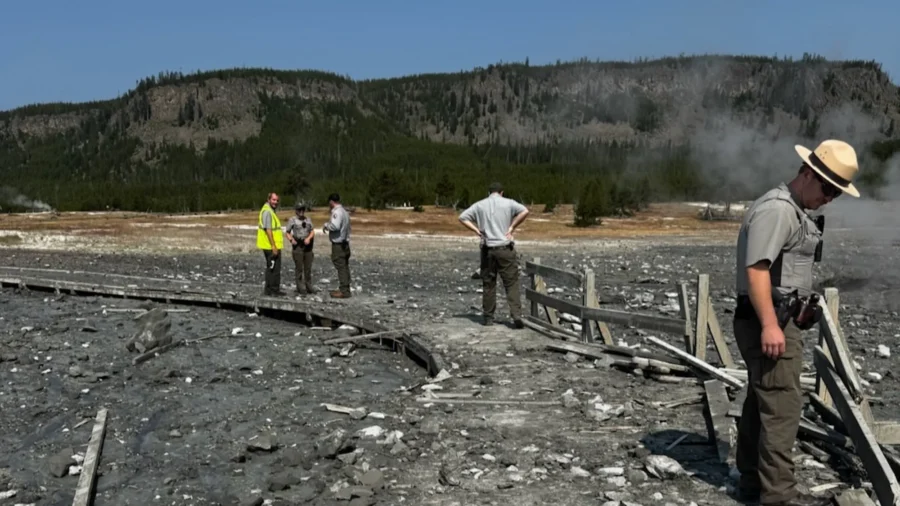A geyser at Yellowstone National Park underwent a violent explosion on July 23, sending mud and debris into the air.
“On Tuesday, July 23, at about 10:19 a.m., a localized hydrothermal explosion occurred near Sapphire Pool in Biscuit Basin, located just north of Old Faithful,” the National Park Service said in a news release.
The explosion was captured on video by some visitors, who shared it on social media. The video shows a dark plume of steam shooting in the air, and bystanders running away from the explosion along a wooden boardwalk.
There were no reports of injuries, however an investigation into the incident is ongoing, and the extent of the damage is being assessed.
Biscuit Basin, including the parking lot and boardwalks, are temporarily closed for safety reasons. The Grand Loop Road remains open, according to the release.
Hydrothermal explosions are common and can occur at least once a year at Yellowstone Park, according to the U.S. Geological Survey (USGS) at the Yellowstone Observatory. Many of these explosions occur in the backcountry, where they go largely unnoticed, however.
The explosions are typically the result of water flashing into steam underground, according to the USGS.
“Hydrothermal explosions are violent and dramatic events resulting in the rapid ejection of boiling water, steam, mud, and rock fragments. The explosions can reach heights of 2 km (1.2 miles) and leave craters that are from a few meters (tens of feet) up to more than 2 km (1.2 mi) in diameter,” according to the USGS.
A potential reason for the explosion was the likely accumulation of minerals, which got clogged up in one of the underground pipes. Yellowstone is located atop a vast network of hydrothermal plumbing, filled with heated water and steam.
Although relatively common, the last explosion at Biscuit Basin was in May 2009.
As a general rule, these explosions are difficult to predict and can occur at any given time, despite the presence of seismic sensors, according to the USGS.
The investigation by the Park Service and USGS aims to reveal whether any changes were caused by the explosion to the underground system.
Measurements into chemical makeup and temperature will be obtained, and tests on residual rumbling will be conducted by earthquake scientists, before it can be determined whether the area can be reopened for visitors.
“No other monitoring data show changes in the Yellowstone region. Today’s explosion does not reflect a change in the volcanic system, which remains at normal background levels of activity,” the NPS said in the release.
The NPS said more details about the event will be made public as information becomes available.

